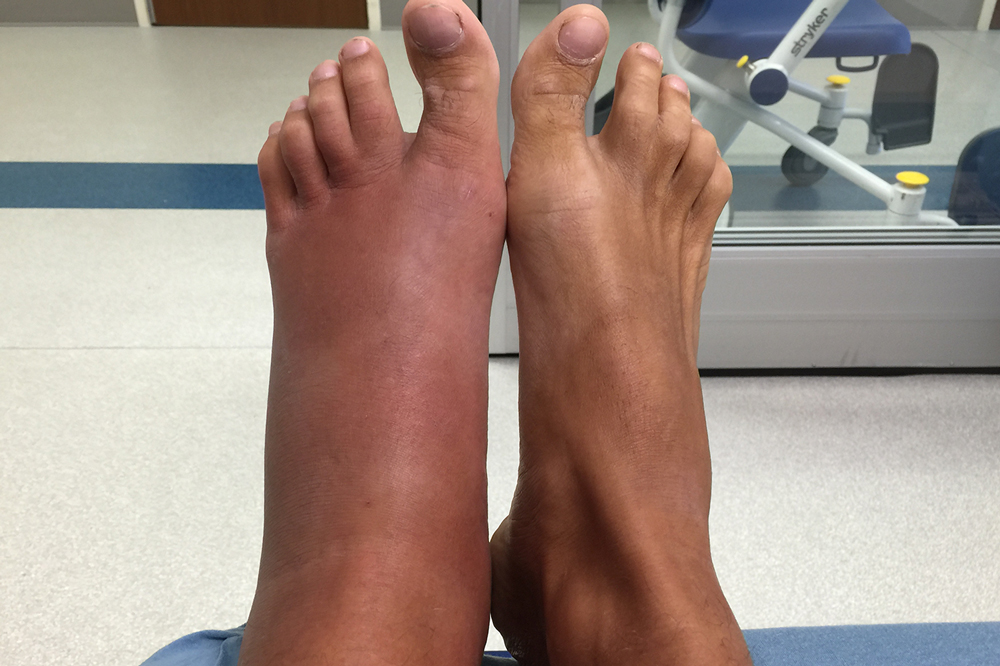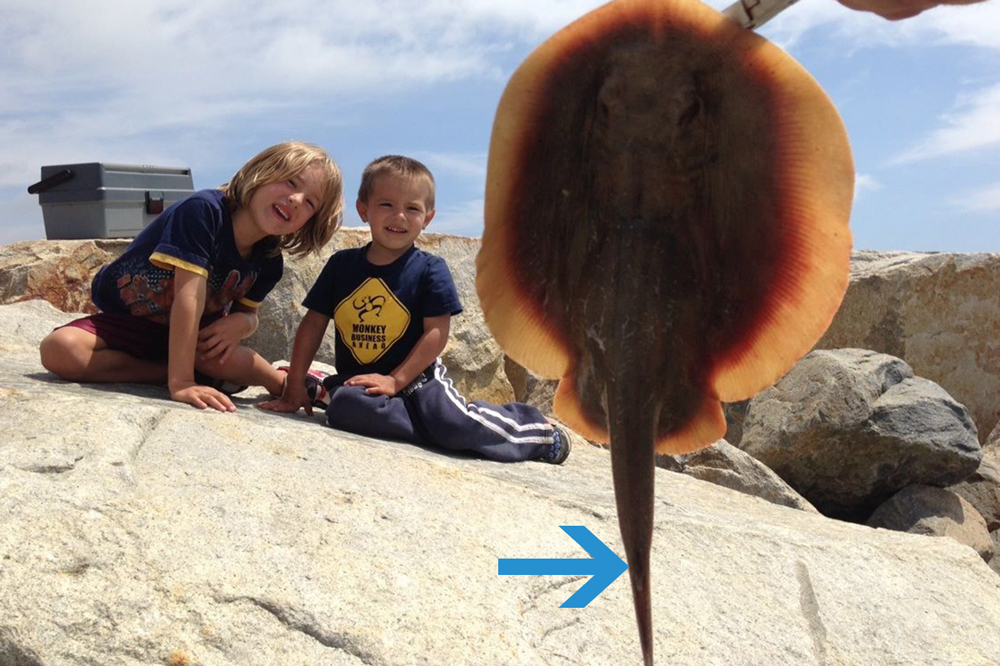Want to avoid stingrays? Don’t shuffle. Stomp.
There is zero evidence that “Shuffling your feet” actually works.
The Internet, most surfers and many lifeguards all believe in and repeat an old wives’ tale: Namely that if you shuffle your feet, somehow that will prevent stingrays from injuring you.
They call this the stingray shuffle.
Despite the shuffle being common advice, I am not aware of any scientific evidence that suggests shuffling your feet actually deters stingrays and prevents stingray injuries.
Don’t worry about sharks: There are thousands of stingray injuries every year.
Most people in the non-ocean-going public are worried about shark attacks. They shouldn’t be. The fact is swimmers in California have a one in 738 million chance of being attacked by a shark.
What people should be worried about are stingrays.
The Orange County Register reported on the record stingray injuries in Huntington Beach in 2012: As of some point in early November, there were 438 injuries. Again, this was in Huntington Beach alone. Replicate this estimate through the state of California, and you’re looking at thousands of injuries each year.
Given the high number of stingray injuries, there should be some scientific research performed on this oft-repeated shuffling advice.
I’ve seen it. Shuffling doesn’t work.
I know shuffling doesn’t work from personal experience.
I’ve been hit by stingrays 4 times. I was shuffling my feet 3 out of 4 of those times. The other time I was walking.
I would guess shuffling your feet is better than nothing, but a better avoidance behavior is stomping your feet.
Here’s why:
I’ve seen it: Stomping your feet does work.
Quite often I dive for lobster in shallow areas. There are always stingrays out there.
I’ve seen this in person not just once or a few times… I’ve seen it every time:
When a ray is 10 feet (or even 5 feet) away – shuffling does nothing.
Stomping my feet, the rays seem to sense the vibration and they swim away with a quickness… even when they are 20 feet away.
It’s worth noting that there are lifeguards who have run through the surf every day of their lives for 40 years and have never been stung. The stomp is probably the reason for that.
Now, don’t be stupid and run out there like a lifeguard. This is likely dangerous (even though lifeguards do it) because it doesn’t give the stingrays adequate time to feel the vibrations and swim away. You could just step on one.
If you’re going to stomp, do it deliberately and slowly, so stringrays have a chance to leave.
So how do I “stomp”? What is stomping?
For history’s sake, let it be known hereforth and through the ages that I was the first to call shenanigans on shuffling and recognize stomping as the superior stingray avoidance behavior. Accordingly, I dub this “Chernicky’s stingray stomp“. If I do nothing else with my life, there that is.
I’m also not going to tell you to do it. You’re responsible for your own feet.
But I will tell you what I do when I surf:
- I slowly and carefully enter the water, stepping on what I can see.
- I stomp my feet repeatedly until I get on the board.
- If I’m standing in one place waiting for my chance to paddle out, I stomp my feet in place.
- I get on the board as soon as possible.
Stomping could definitely use some scientific validation. For now, take it as a highly-likely, educated hypothesis based upon multiple observations.
If you’re a marine biology student, I just gifted you a thesis topic.
At some point, I hope to have time to produce and post a video to this page demonstrating the difference in stingray behavior when shuffling vs. stomping.
Further reading
Having been hit by stingrays 4 separate times, I have become somewhat of a first-person authority on stingrays and stingray injuries.
You may also be interested in:
T.H.I.N.K. Post Eval:
True
Helpful
Inspiring
Necessary
Kind







